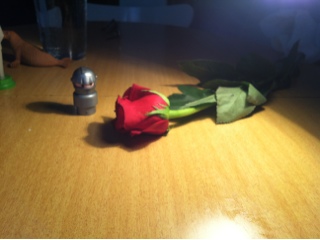Here's the finished painting with the shading done in a mixture of orange and blue. Paint any fruit or vegetable you want, just remember to use complimentaries to shade. So, for example, a green pepper would be shaded in a mixture of green and red, its complimentary, and so on...click to enlarge. Due 3/4.
I chose to paint an orange...the colors in the photo are ultra- saturated and look much different in person, one of the problems with painting from photos. I painted this from life, so my colors are a little different.




















